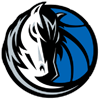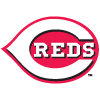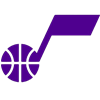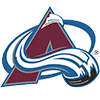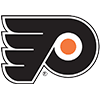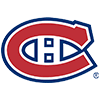Welcome back to the MLB Barometer. I'll get to this week's names in a minute, but first I wanted to talk about a fun activity I got to take part in over the last couple weeks: the SiriusXM Fantasy Sports Radio All-Time Fantasy Baseball Draft.
The group of RotoWire Fantasy Sports Today hosts (which, during baseball season, includes Jeff Erickson, Nick Whalen, James Anderson, Todd Zola and myself) drafted against the hosts of 11 other shows on the network, building rosters which consisted of nine hitters and six pitchers. Here's a link to the full draft board.
The specifics were intentionally left vague for the sake of debate — we aren't playing this out in any way — but we were told we were drafting a players' peak seasons and that anyone post-1900 was in play. Here's a quick look at our picks, their peaks, and why those players stood out to us as smart selections:
| Round | Player | Pos | Five-year Peak | Avg. Peak Season | Notes |
|---|---|---|---|---|---|
| 1 | Josh Gibson | C | 1933-1937 | .374, 16 HR, 55 R, 66 RBI, 5 SB | With Negro League stats now part of the official record, Gibson is now the all-time major-league OPS leader (1.178). His counting-stat totals are held back by shorter Negro League schedules. Pro-rate his peak stats to 550 PA (a typical number for the best modern catchers) and you get 40 HR, 137 R, 163 RBI and 13 SB. Not bad for a catcher. |
| 2 | Alex Rodriguez | SS | 1998-2002 | .307, 47 HR, |
Welcome back to the MLB Barometer. I'll get to this week's names in a minute, but first I wanted to talk about a fun activity I got to take part in over the last couple weeks: the SiriusXM Fantasy Sports Radio All-Time Fantasy Baseball Draft.
The group of RotoWire Fantasy Sports Today hosts (which, during baseball season, includes Jeff Erickson, Nick Whalen, James Anderson, Todd Zola and myself) drafted against the hosts of 11 other shows on the network, building rosters which consisted of nine hitters and six pitchers. Here's a link to the full draft board.
The specifics were intentionally left vague for the sake of debate — we aren't playing this out in any way — but we were told we were drafting a players' peak seasons and that anyone post-1900 was in play. Here's a quick look at our picks, their peaks, and why those players stood out to us as smart selections:
| Round | Player | Pos | Five-year Peak | Avg. Peak Season | Notes |
|---|---|---|---|---|---|
| 1 | Josh Gibson | C | 1933-1937 | .374, 16 HR, 55 R, 66 RBI, 5 SB | With Negro League stats now part of the official record, Gibson is now the all-time major-league OPS leader (1.178). His counting-stat totals are held back by shorter Negro League schedules. Pro-rate his peak stats to 550 PA (a typical number for the best modern catchers) and you get 40 HR, 137 R, 163 RBI and 13 SB. Not bad for a catcher. |
| 2 | Alex Rodriguez | SS | 1998-2002 | .307, 47 HR, 125 R, 129 RBI, 22 SB | Could have just as easily highlighted 2003-2007: .302, 44 HR, 123 R, 126 RBI, 21 SB. Eligibility at 3B or SS kept our options open later in the draft. |
| 3 | Larry Walker | OF | 1997-2001 | .357, 31 HR, 107 R, 97 RBI, 15 SB | Five-tool Hall of Famer who got to play at Coors Field during the steroid/juiced ball era. Injuries cost him an average of 34 games a season at peak, preventing his counting stats from being truly ridiculous. |
| 4 | Chuck Klein | OF | 1929-1933 | .359, 36 HR, 132 R, 139 RBI, 10 SB | Left-handed slugger who played in a high-offense era and got to play his home games at the Baker Bowl, where right field was just 280 feet away. |
| 5 | Manny Ramirez | OF | 2001-2005 | .315, 40 HR, 103 R, 122 RBI, 1 SB | Targeting a high-offense era again, as well as a hitter-friendly park. Ramirez has more than enough in his bat to make up for a lack of speed. |
| 6 | Bob Feller | SP | 1946-1950 | 3.02 ERA, 1.26 WHIP, 19 W, 187 K, 2 SV | Struck out 348 batters in 1946; only one other pitcher had even half as many that season. He started 42 games that year and also saved four more. |
| 7 | Mordecai "Three Finger" Brown | SP | 1906-1910 | 1.42 ERA, 0.93 WHIP, 25 W, 138 K, 5 SV | Starters in the Dead Ball Era don't offer many strikeouts, but the ratios and win totals in that time period were just plain silly. |
| 8 | Alfonso Soriano | 2B | 2002-2006 | .283, 37 HR, 108 R, 97 RBI, 33 SB | Had a 40-40 season in 2006. Averaged a 30-30 season across an eight-year period (2001-2008). |
| 9 | Jose Ramirez | 3B | 2017-2022* | .279, 31 HR, 97 R, 100 RBI, 24 SB* | Interesting to see how a player who's been a steady first rounder for over half a decade now but rarely a 1.1 candidate fares in an all-time draft. His five-category production didn't feel out of place at this point in the draft. |
| 10 | Tim Raines Sr. | UT | 1982-1986 | .307, 9 HR, 107 R, 55 RBI, 77 SB | Really only a three-category player, but we felt we'd banked enough power to fill our utility spot with one of the best speedsters of all time. (Rickey Henderson averaged .285, 17 HR, 123 R, 61 RBI and 94 SB from 1982 to 1986, but he cost a second-round pick.) |
| 11 | Fergie Jenkins | SP | 1967-1971 | 2.96 ERA, 1.07 WHIP, 21 W, 261 K, 0 SV | Jenkins' per-inning numbers may have slightly trailed the likes of Tom Seaver and Bob Gibson during his peak, but Jenkins posted those numbers while handling an incredible workload, averaging 309 innings over that stretch compared to 276 for Seaver and 267 for Gibson. |
| 12 | Hank Greenberg | 1B | 1937-1940** | .327, 43 HR, 131 R, 148 RBI, 7 SB | Would rank much higher on the all-time leaderboards if not for his military service during WWII. His 58 homers in 1938 left him two short of the then-record; no one would beat that mark until Roger Maris' 61 in '61, 23 years later. |
| 13 | Eric Gagne | RP | 2002-2004*** | 1.79 ERA, 0.82 WHIP, 4 W, 122 K, 51 SV | It's remarkable to look back at closer usage from just two decades ago. Gagne threw 82.1 innings in each of these three years. In the last decade, only once has a reliever thrown at least that many innings while recording double-digit saves (Liam Hendricks in 2019). |
| 14 | Robb Nen | RP | 1996-200 | 2.53 ERA, 1.16 WHIP, 6 W, 90 K, 38 SV | Sits 25th all-time with 314 saves despite shoulder troubles cutting his career short after his age-32 season. Only two players ahead of him on the all-time saves list (Troy Percival and Huston Street) got there in fewer innings. |
| 15 | Wilbur Wood | SP/RP | 1968-1972 | 2.32 ERA, 1.08 WHIP, 16 W, 127 K, 11 | We tried to game the system by grabbing a pitcher who was both a closer and a starter during his peak. (Dennis Eckersley and John Smoltz were off the board.) I can't tell if I'm more impressed by the knuckleballer's 88-appearance season as a reliever in 1968 or his 49-start season in 1972. |
* 2020 numbers excluded
** using a four-year peak for Greenberg since he left early in the 1941 season due to WWII
*** Gagne only had a three-year peak, as he underwent Tommy John surgery in 2005
Altogether a very fun exercise which allowed us to ogle some outrageous old-timey stat lines, put modern players in perspective and think about how fantasy fundamentals like roster balance and park factors play out under different circumstances. I thoroughly enjoyed the draft, and I'd love to hear which picks you would have done differently, or which squad you think wound up the best.
For now, though, let's hop back in the time machine and move back to the present. This week's list of risers includes several players who have overcome early struggles or injuries and one who wasn't even on the major-league roster to start the year, though we'll kick things off with a representative of Team RotoWire who's already in the all-time conversation but who isn't showing signs of slowing down.
RISERS
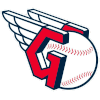 Jose Ramirez, 3B, Guardians: Ramirez didn't get a ton of buzz back in draft season, perhaps because there was nothing new to add. His remarkably steady, five-category production left him as a solid choice in the late first or early second round of a 15-team league, but for whatever reason (perhaps that very same steadiness), it never felt particularly exciting to take him. Flashy pick or no, Ramirez has more than delivered this season, sitting sixth in earned value thus far. He's been the same five-category contributor as always, sitting in the top 10 for homers (18), runs (58) and RBI (67) while adding 14 steals and a .273 average. Under the hood, he hasn't been meaningfully different than he has in recent seasons, as his elite 11.7 percent strikeout rate and unremarkable 8.3 percent barrel rate are both typical Jose Ramirez numbers. Perhaps that makes him a poor fit for a "risers" column, as it's hard to rise when you're doing the same thing you've always done, but after going .313/.379/.625 with nine homers and seven steals in his last 27 games, he deserved a mention. Anyone who thought he'd slip from his perch among fantasy's elite in his age-31 season should think again. This is one of the best third basemen of all-time we're talking about, after all. Those guys tend to have staying power.
Jose Ramirez, 3B, Guardians: Ramirez didn't get a ton of buzz back in draft season, perhaps because there was nothing new to add. His remarkably steady, five-category production left him as a solid choice in the late first or early second round of a 15-team league, but for whatever reason (perhaps that very same steadiness), it never felt particularly exciting to take him. Flashy pick or no, Ramirez has more than delivered this season, sitting sixth in earned value thus far. He's been the same five-category contributor as always, sitting in the top 10 for homers (18), runs (58) and RBI (67) while adding 14 steals and a .273 average. Under the hood, he hasn't been meaningfully different than he has in recent seasons, as his elite 11.7 percent strikeout rate and unremarkable 8.3 percent barrel rate are both typical Jose Ramirez numbers. Perhaps that makes him a poor fit for a "risers" column, as it's hard to rise when you're doing the same thing you've always done, but after going .313/.379/.625 with nine homers and seven steals in his last 27 games, he deserved a mention. Anyone who thought he'd slip from his perch among fantasy's elite in his age-31 season should think again. This is one of the best third basemen of all-time we're talking about, after all. Those guys tend to have staying power.
 Steven Kwan, OF, Guardians: A hamstring injury which kept Kwan out for most of May leaves him with too few plate appearances to show up on the qualified hitter leaderboards. Remove that filter and open the leaderboard up to all hitters, however, and you'll see he sits a remarkable sixth among hitters in fWAR with 3.5, despite the fact that everyone ahead of him on the leaderboard has at least 122 more plate appearances. Kwan hit .353/.407/.496 prior to straining his hamstring and has a hit in all but one game since his return, slashing a ridiculous .463/.526/.731 over that stretch. Yes, Kwan's .401 BABIP on the season means that he's hitting into a fair amount of good luck, but his xBA says his batting average deserves to be an excellent .335, a number his fantasy managers would surely accept. If there's a negative with Kwan, it's that he mostly seems to be a better version of the same player and not someone who's added anything to his game. His seven homers may already be a career high, but his third-percentile barrel rate and second-percentile hard-hit rate should eliminate any notions that he's developed real power. Instead, he's started making even more contact than before, cutting his strikeout rate from 10.4 percent last year to 7.2 percent this season.
Steven Kwan, OF, Guardians: A hamstring injury which kept Kwan out for most of May leaves him with too few plate appearances to show up on the qualified hitter leaderboards. Remove that filter and open the leaderboard up to all hitters, however, and you'll see he sits a remarkable sixth among hitters in fWAR with 3.5, despite the fact that everyone ahead of him on the leaderboard has at least 122 more plate appearances. Kwan hit .353/.407/.496 prior to straining his hamstring and has a hit in all but one game since his return, slashing a ridiculous .463/.526/.731 over that stretch. Yes, Kwan's .401 BABIP on the season means that he's hitting into a fair amount of good luck, but his xBA says his batting average deserves to be an excellent .335, a number his fantasy managers would surely accept. If there's a negative with Kwan, it's that he mostly seems to be a better version of the same player and not someone who's added anything to his game. His seven homers may already be a career high, but his third-percentile barrel rate and second-percentile hard-hit rate should eliminate any notions that he's developed real power. Instead, he's started making even more contact than before, cutting his strikeout rate from 10.4 percent last year to 7.2 percent this season.
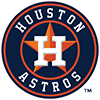 Hunter Brown, SP, Astros: In his first full season last year, Brown finished with a 5.09 ERA, but that came with strong peripherals and ERA estimators (3.52 xFIP, 3.74 SIERA) as well as plenty of prospect pedigree, making him seem primed for a breakout. In his first nine outings this year, he instead took a big step backward, struggling to a 7.71 ERA while briefly earning a demotion to the bullpen. He struck out just 22.9 percent of opposing batters over that stretch while walking 11.7 percent. Over his last six starts, however, he's turned things around dramatically. He's improved his strikeout rate to 28.9 percent and cut his walk rate to 5.6 percent, leading to a 1.70 ERA. All six outings have been quality starts. The fact that Brown's recent turnaround comes with a shift in his pitch mix makes it easier to believe he'll remain the good version of himself going forward:
Hunter Brown, SP, Astros: In his first full season last year, Brown finished with a 5.09 ERA, but that came with strong peripherals and ERA estimators (3.52 xFIP, 3.74 SIERA) as well as plenty of prospect pedigree, making him seem primed for a breakout. In his first nine outings this year, he instead took a big step backward, struggling to a 7.71 ERA while briefly earning a demotion to the bullpen. He struck out just 22.9 percent of opposing batters over that stretch while walking 11.7 percent. Over his last six starts, however, he's turned things around dramatically. He's improved his strikeout rate to 28.9 percent and cut his walk rate to 5.6 percent, leading to a 1.70 ERA. All six outings have been quality starts. The fact that Brown's recent turnaround comes with a shift in his pitch mix makes it easier to believe he'll remain the good version of himself going forward:
| Period | ERA | Four-Seam% | Cutter% | Sinker% | Changeup% | Slider% | Knuckle Curve% |
|---|---|---|---|---|---|---|---|
| First Nine Outings | 7.71 | 44.4% | 12.2% | 4.3% | 13.2% | 12.1% | 13.8% |
| Last Six Outings | 1.70 | 30.8% | 10.0% | 17.3% | 13.7% | 14.6% | 13.5% |
A broad repertoire like Brown's can take some time to corral, but it looks like he's found a formula that works, and the sinker appears to be the answer. He didn't throw the pitch before May of this year, and the results haven't been particularly notable, with the pitch being worth -1.3 runs according to Statcast, but the added offering seems to be keeping hitters from teeing off on his four-seam fastball as frequently.
 Justin Steele, SP, Cubs: Steele's efforts last season earned him a fifth-place finish in NL Cy Young voting, but his attempts to follow that up this year got off to a rocky start. He was pitching well in his Opening Day start against the Rangers before straining his hamstring while fielding a bunt. He returned in early May but wasn't at his best through his first four outings, posting a 6.53 ERA and striking out just 18.9 percent of opposing batters. Even during that stretch, he maintained a low walk rate (5.6 percent), so there was reason to believe it was nothing more than a brief post-injury blip. That certainly seems to be the case now, as Steele has been back to his best over his last five starts, recording a 1.14 ERA and 0.98 WHIP. His strikeout rate is up to 25.8 percent over that stretch, and his walk rate remains strong at 7.0 percent. Steele has been quite good over the last three seasons, ranking 10th in ERA (3.12) among pitchers who have thrown at least 300 innings over that stretch, so it shouldn't be a shock that he's capable of pitching like one of the best pitchers in baseball for five starts. He won't have a 1.14 ERA the rest of the way, but if he pitches like a down-ballot Cy Young candidate, it wouldn't be new territory.
Justin Steele, SP, Cubs: Steele's efforts last season earned him a fifth-place finish in NL Cy Young voting, but his attempts to follow that up this year got off to a rocky start. He was pitching well in his Opening Day start against the Rangers before straining his hamstring while fielding a bunt. He returned in early May but wasn't at his best through his first four outings, posting a 6.53 ERA and striking out just 18.9 percent of opposing batters. Even during that stretch, he maintained a low walk rate (5.6 percent), so there was reason to believe it was nothing more than a brief post-injury blip. That certainly seems to be the case now, as Steele has been back to his best over his last five starts, recording a 1.14 ERA and 0.98 WHIP. His strikeout rate is up to 25.8 percent over that stretch, and his walk rate remains strong at 7.0 percent. Steele has been quite good over the last three seasons, ranking 10th in ERA (3.12) among pitchers who have thrown at least 300 innings over that stretch, so it shouldn't be a shock that he's capable of pitching like one of the best pitchers in baseball for five starts. He won't have a 1.14 ERA the rest of the way, but if he pitches like a down-ballot Cy Young candidate, it wouldn't be new territory.
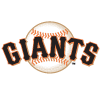 Heliot Ramos, OF, Giants: Ramos was a highly-rated prospect, peaking at 19th overall early in the 2021 season according to James Anderson's prospect rankings here at RotoWire, but his star had fallen in recent seasons. He struggled in his first two attempts at Triple-A, and in limited MLB action prior to this year, he hit .158/.220/.250 in 34 games. He was considered a power-over-hit prospect, but that archetype often gets found out in the majors when it's revealed that there's simply not enough "hit" to make the profile work. Ramos' 31.7 percent strikeout rate in his brief cameos prior to this season certainly hinted in that direction and left him on the outside looking in on Opening Day. Since getting recalled in early May, however, he's been on fire, hitting .289/.363/.522 with 10 homers in 41 games. He's also been entrusted with center field following the season-ending shoulder surgery for Jung Hoo Lee, beating out Luis Matos for the job, and he's now the Giants' everyday number two hitter. Ramos is still a power-over-hit player, but now the power (15.7 percent barrel rate) far outweighs the swing-and-miss issues, especially as he's cut his strikeout rate to 29.1 percent.
Heliot Ramos, OF, Giants: Ramos was a highly-rated prospect, peaking at 19th overall early in the 2021 season according to James Anderson's prospect rankings here at RotoWire, but his star had fallen in recent seasons. He struggled in his first two attempts at Triple-A, and in limited MLB action prior to this year, he hit .158/.220/.250 in 34 games. He was considered a power-over-hit prospect, but that archetype often gets found out in the majors when it's revealed that there's simply not enough "hit" to make the profile work. Ramos' 31.7 percent strikeout rate in his brief cameos prior to this season certainly hinted in that direction and left him on the outside looking in on Opening Day. Since getting recalled in early May, however, he's been on fire, hitting .289/.363/.522 with 10 homers in 41 games. He's also been entrusted with center field following the season-ending shoulder surgery for Jung Hoo Lee, beating out Luis Matos for the job, and he's now the Giants' everyday number two hitter. Ramos is still a power-over-hit player, but now the power (15.7 percent barrel rate) far outweighs the swing-and-miss issues, especially as he's cut his strikeout rate to 29.1 percent.
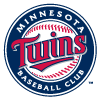 Carlos Santana, 1B, Twins: Santana debuted as a catcher back in 2010, so to see him still going today with a bat strong enough to remain an everyday first baseman in his age-38 season is remarkable. It doesn't get any less remarkable when considering his recent history. He's on his fifth team in three seasons and is coming off a pair of years where he was only barely above-average at the plate (101 wRC+), years which in turn followed a pair of seasons where he finished with a below-average batting line. His career trajectory sure suggested that it would be no surprise if he played his way out of the league this season, like Jose Abreu, who's one year his junior, has done. Instead, Santana has been the best version of himself in years, with his two-hit day on Sunday pushing his line up to .247/.329/.441, good for a 120 wRC+. His 15.2 percent strikeout rate is his lowest mark since 2018, and while his quality of contact metrics are mediocre, he's never been someone with light-tower power. His 12 homers so far put him on pace for 25, which would be the fifth-highest mark of his 15-year career. He just keeps going.
Carlos Santana, 1B, Twins: Santana debuted as a catcher back in 2010, so to see him still going today with a bat strong enough to remain an everyday first baseman in his age-38 season is remarkable. It doesn't get any less remarkable when considering his recent history. He's on his fifth team in three seasons and is coming off a pair of years where he was only barely above-average at the plate (101 wRC+), years which in turn followed a pair of seasons where he finished with a below-average batting line. His career trajectory sure suggested that it would be no surprise if he played his way out of the league this season, like Jose Abreu, who's one year his junior, has done. Instead, Santana has been the best version of himself in years, with his two-hit day on Sunday pushing his line up to .247/.329/.441, good for a 120 wRC+. His 15.2 percent strikeout rate is his lowest mark since 2018, and while his quality of contact metrics are mediocre, he's never been someone with light-tower power. His 12 homers so far put him on pace for 25, which would be the fifth-highest mark of his 15-year career. He just keeps going.
FALLERS
 Jared Jones, SP, Pirates: Jones was the talk of the town in the early part of the season, in this column and in many others. Back in late April, I did a deep dive on Jones, specifically looking at his control. As a prospect, he fell into a very large bucket of young pitchers with good stuff but with command concerns which could push them into the bullpen. Through five starts, Jones blew past expectations in terms of his stuff, which wasn't merely very good but looked genuinely elite, but more importantly did the same with his control, which looked like a real strength instead of a potentially career-killing weakness. Perhaps we anointed him a bit prematurely. Jones started to slip over his next five starts, but his numbers over his last five outings represent a real concern:
Jared Jones, SP, Pirates: Jones was the talk of the town in the early part of the season, in this column and in many others. Back in late April, I did a deep dive on Jones, specifically looking at his control. As a prospect, he fell into a very large bucket of young pitchers with good stuff but with command concerns which could push them into the bullpen. Through five starts, Jones blew past expectations in terms of his stuff, which wasn't merely very good but looked genuinely elite, but more importantly did the same with his control, which looked like a real strength instead of a potentially career-killing weakness. Perhaps we anointed him a bit prematurely. Jones started to slip over his next five starts, but his numbers over his last five outings represent a real concern:
| Period | K% | BB% | Stuff+ | Location+ | ERA | WHIP |
| First 5 Starts | 34.8% | 3.6% | 139 | 105 | 2.79 | 0.83 |
| Next 5 Starts | 24.4% | 5.0% | 127 | 105 | 3.30 | 1.10 |
| Last 5 Starts | 20.8% | 12.5% | 115 | 99 | 5.00 | 1.41 |
Jones' Stuff+ and Location+ numbers have trended in the same direction as his strikeout and walk numbers. He still has excellent stuff, but it's slipped from the best stuff in baseball to merely very good. Meanwhile, his control remained solidly above-average even as his stuff started to slip, but his recent outings have seen a huge uptick in walks as his control has slipped to slightly sub-par. Will Jones keep pitching like the most recent version of himself for the rest of the year? Unlikely, if his performance against the Rays in his most recent start — two runs on three hits with eight strikeouts in seven innings — is any indication. But if you thought (as I did) that the control Jones showed during his initial hot streak was an indication that he'd already emerged as a fully-formed ace, it's time to pump the brakes a bit.
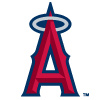 Jo Adell, OF, Angels: It was a fun April for Adell, who looked to be taking exactly the sort of steps forward he needed to be taking to finally become the player he was supposed to be as a prospect. He finished the month hitting .316/.365/.614 with four homers and five steals, and more importantly, he struck out just 22.2 percent of the time, a massive improvement on the 35.4 percent career mark he carried into the year. It's now late June, and his season line is down to .184/.247/.393, not too far from his career line of .206/.256/.373. It's a reminder that even if a player is showing an uptick in his underlying numbers to back an uptick in performance early in the season, there's no guarantee that either improvement sticks around. Since May 1, Adell has struck out 33.9 percent of the time while hitting .134/.204/.309. He's at least hit eight homers over that stretch and added four more steals, keeping his fantasy value from completely bottoming out, but a slump of this magnitude means the playing time (and consequently the counting stats) could dry up soon. A team like the Angels should be giving opportunities to young players with potentially bright futures, but it's harder than ever to say that Adell is one of those.
Jo Adell, OF, Angels: It was a fun April for Adell, who looked to be taking exactly the sort of steps forward he needed to be taking to finally become the player he was supposed to be as a prospect. He finished the month hitting .316/.365/.614 with four homers and five steals, and more importantly, he struck out just 22.2 percent of the time, a massive improvement on the 35.4 percent career mark he carried into the year. It's now late June, and his season line is down to .184/.247/.393, not too far from his career line of .206/.256/.373. It's a reminder that even if a player is showing an uptick in his underlying numbers to back an uptick in performance early in the season, there's no guarantee that either improvement sticks around. Since May 1, Adell has struck out 33.9 percent of the time while hitting .134/.204/.309. He's at least hit eight homers over that stretch and added four more steals, keeping his fantasy value from completely bottoming out, but a slump of this magnitude means the playing time (and consequently the counting stats) could dry up soon. A team like the Angels should be giving opportunities to young players with potentially bright futures, but it's harder than ever to say that Adell is one of those.
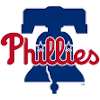 Taijuan Walker, SP, Phillies: When the Phillies handed Walker a four-year, $72 million contract prior to the 2023 season, it looked like a possible overpay. A year and a half into that deal, we can move from "possible" to "definite". Walker rarely looked like more than a No. 4 starter at his best, and the Phillies acquired him for his age-30 to age-33 seasons, which are unsurprisingly shaping up to be worse than his late twenties:
Taijuan Walker, SP, Phillies: When the Phillies handed Walker a four-year, $72 million contract prior to the 2023 season, it looked like a possible overpay. A year and a half into that deal, we can move from "possible" to "definite". Walker rarely looked like more than a No. 4 starter at his best, and the Phillies acquired him for his age-30 to age-33 seasons, which are unsurprisingly shaping up to be worse than his late twenties:
Age | ERA | WHIP | K% | BB% | GB% | SIERA |
|---|---|---|---|---|---|---|
20-29 | 3.89 | 1.23 | 21.4% | 7.5% | 43.6% | 4.17 |
30+ | 4.67 | 1.35 | 18.8% | 9.6% | 42.5% | 4.91 |
The underlying changes aren't huge, but Walker is missing fewer bats, walking more batters and doing a worse job at keeping the ball on the ground. (The groundball rate actually held steady last season, but he's down to a 36.0 percent groundball rate this season.) He was just placed on the injured list with a blister after giving up seven runs in 9.2 innings with a 7:5 K:BB across his last two starts, but the transaction reads more like the Phillies creating space to move Spencer Turnbull back into the rotation rather than a genuine injury. When Walker gets "healthy" again, it will be hard for the Phillies to justify reinstalling him as the fifth starter ahead of Turnbull, who has a 2.63 ERA and 1.05 WHIP as a swingman this season, backed by a strong 3.42 SIERA. Walker is probably best served moving to a long-relief role for now, where he'll wait until an injury opens up the chance to be a starter again.
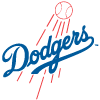 Walker Buehler, SP, Dodgers: Buehler was someone I targeted heavily in leagues with IL spots, as it was clear that he'd be ready to return from Tommy John surgery fairly early in the year. If you could wait until fairly late in the draft and still get five months of a pitcher who had a 2.82 ERA and 0.99 WHIP from 2018 to 2021 before the injury issues popped up, why wouldn't you? Buehler's season thus far is a reminder why. While he avoided setbacks and was indeed able to make his season debut in early May as predicted (something which can't be taken for granted), the results haven't been vintage Buehler or even anything close. He's struggled to a 5.84 ERA and 1.51 WHIP through eight starts while striking out just 18.5 percent of opposing batters. He's at least kept his walk rate low (6.0 percent), but he's getting teed off on for 2.4 HR/9, so it's hard to say he's showing pinpoint control. The Dodgers elected to give him a bit of a break, placing him on the injured list Wednesday with hip discomfort, an issue which doesn't seem particularly serious. Buehler could certainly figure things out as the season progresses and may well pitch like a frontline starter come playoff time, but his early struggles are a reminder that it's smart to look for both a performance discount and an injury discount when shopping for Tommy John returnees during draft season.
Walker Buehler, SP, Dodgers: Buehler was someone I targeted heavily in leagues with IL spots, as it was clear that he'd be ready to return from Tommy John surgery fairly early in the year. If you could wait until fairly late in the draft and still get five months of a pitcher who had a 2.82 ERA and 0.99 WHIP from 2018 to 2021 before the injury issues popped up, why wouldn't you? Buehler's season thus far is a reminder why. While he avoided setbacks and was indeed able to make his season debut in early May as predicted (something which can't be taken for granted), the results haven't been vintage Buehler or even anything close. He's struggled to a 5.84 ERA and 1.51 WHIP through eight starts while striking out just 18.5 percent of opposing batters. He's at least kept his walk rate low (6.0 percent), but he's getting teed off on for 2.4 HR/9, so it's hard to say he's showing pinpoint control. The Dodgers elected to give him a bit of a break, placing him on the injured list Wednesday with hip discomfort, an issue which doesn't seem particularly serious. Buehler could certainly figure things out as the season progresses and may well pitch like a frontline starter come playoff time, but his early struggles are a reminder that it's smart to look for both a performance discount and an injury discount when shopping for Tommy John returnees during draft season.









